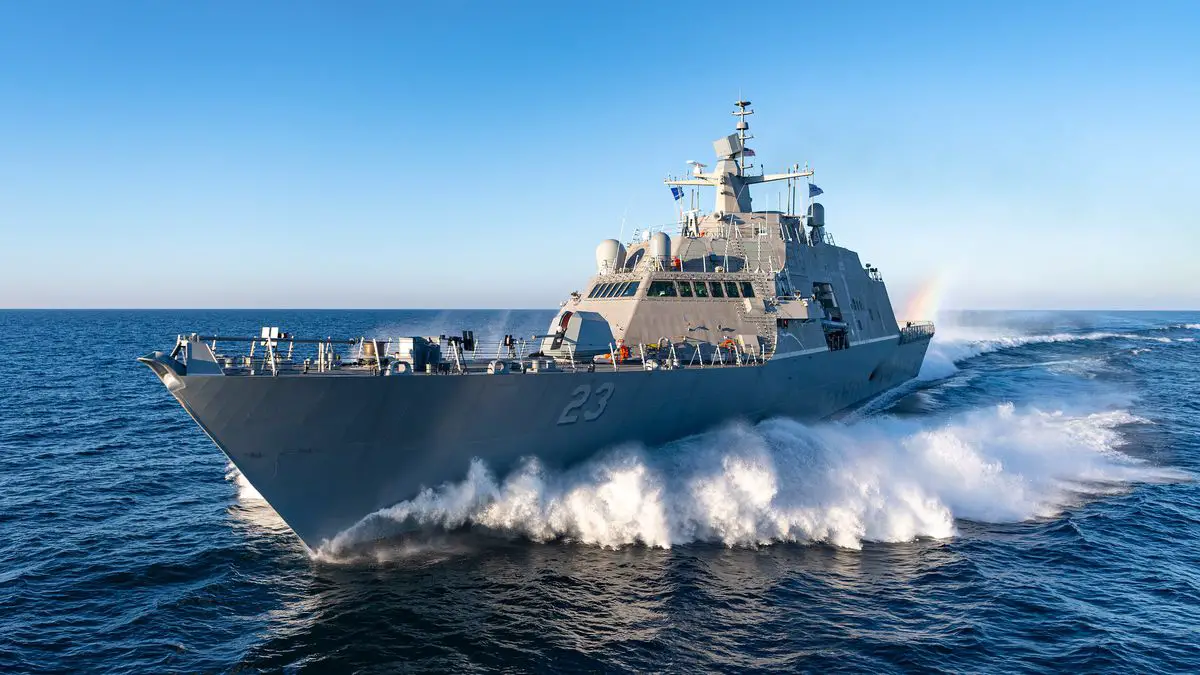Littoral Combat Ship (LCS) 23, the future USS Cooperstown, completed acceptance trials in Lake Michigan in December 2020. Unique among combat ships, the focused-mission LCS is designed to support mine countermeasures, anti-submarine and surface warfare missions and is easily adapted to serve future and evolving missions. During trials, the ship proved its readiness to join the U.S. Navy fleet. Trials included a full-power run, maneuverability testing, and surface and air detect-to-engage demonstrations of the ship’s combat system. Major systems and features were demonstrated, including aviation support, small boat launch handling and recovery and machinery control and automation.
USS Cooperstown (LCS-23) will be a Freedom-class littoral combat ship of the United States Navy. She will be the first naval ship named after Cooperstown, New York. U.S. Secretary of the Navy, announced the naming of Cooperstown on 25 July 2015 during a ceremony at the Baseball Hall of Fame, which is located in Cooperstown. Her name honors 68 military veterans from multiple conflicts (starting with the Civil War) who are members of the Baseball Hall of Fame. Marinette Marine was awarded the contract to build the ship on 29 December 2010, at their shipyard in Marinette, Wisconsin. Cooperstown was launched on 19 January 2020 and christened on 29 February 2020.
The Freedom class is one of two classes of the littoral combat ship program, built for the United States Navy. The Freedom class was proposed by a consortium formed by Lockheed Martin as “prime contractor” and by Fincantieri through the subsidiary Marinette Marine (manufacturer) as a contender for a fleet of small, multipurpose warships to operate in the littoral zone. Two ships were approved, to compete with the Independence-class design offered by General Dynamics and Austal for a construction contract of up to 55 vessels. Despite initial plans to only accept two each of the Freedom and Independence variants, the U.S. Navy has since announced plans to order up to 10 additional ships of each class, for a total 12 ships per class.
The ship is a semiplaning steel monohull with an aluminum superstructure. It is 377 ft (115 m) in length, displaces 3,500 metric tons (3,400 long tons), and can achieve 47 kn (87 km/h; 54 mph). The design incorporates a large, reconfigurable seaframe to allow rapidly interchangeable mission modules, a flight deck with integrated helicopter launch, recovery and handling system, and the capability to launch and recover boats (manned and unmanned) from both the stern and side. The fore deck has a modular weapons zone which can be used for a 57 mm gun turret or missile launcher. A Rolling Airframe Missile launcher is mounted above the hangar for short-range defense against aircraft and cruise missiles, and .50-caliber gun mounts are provided topside.
















